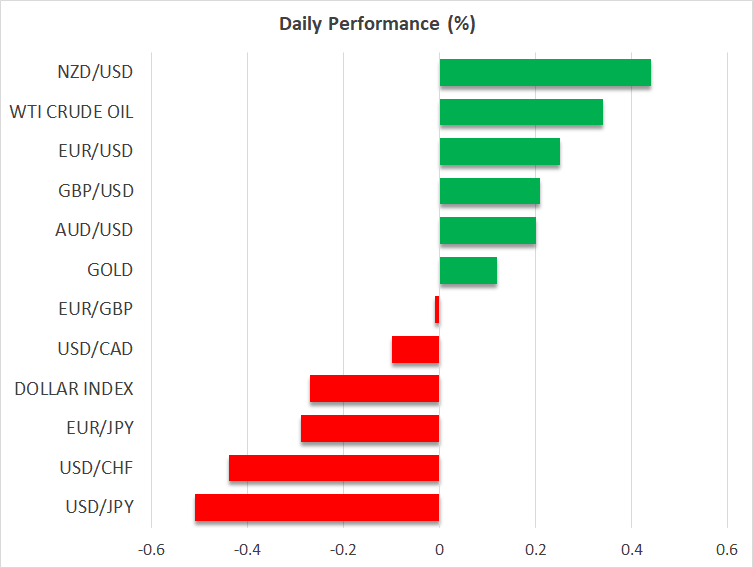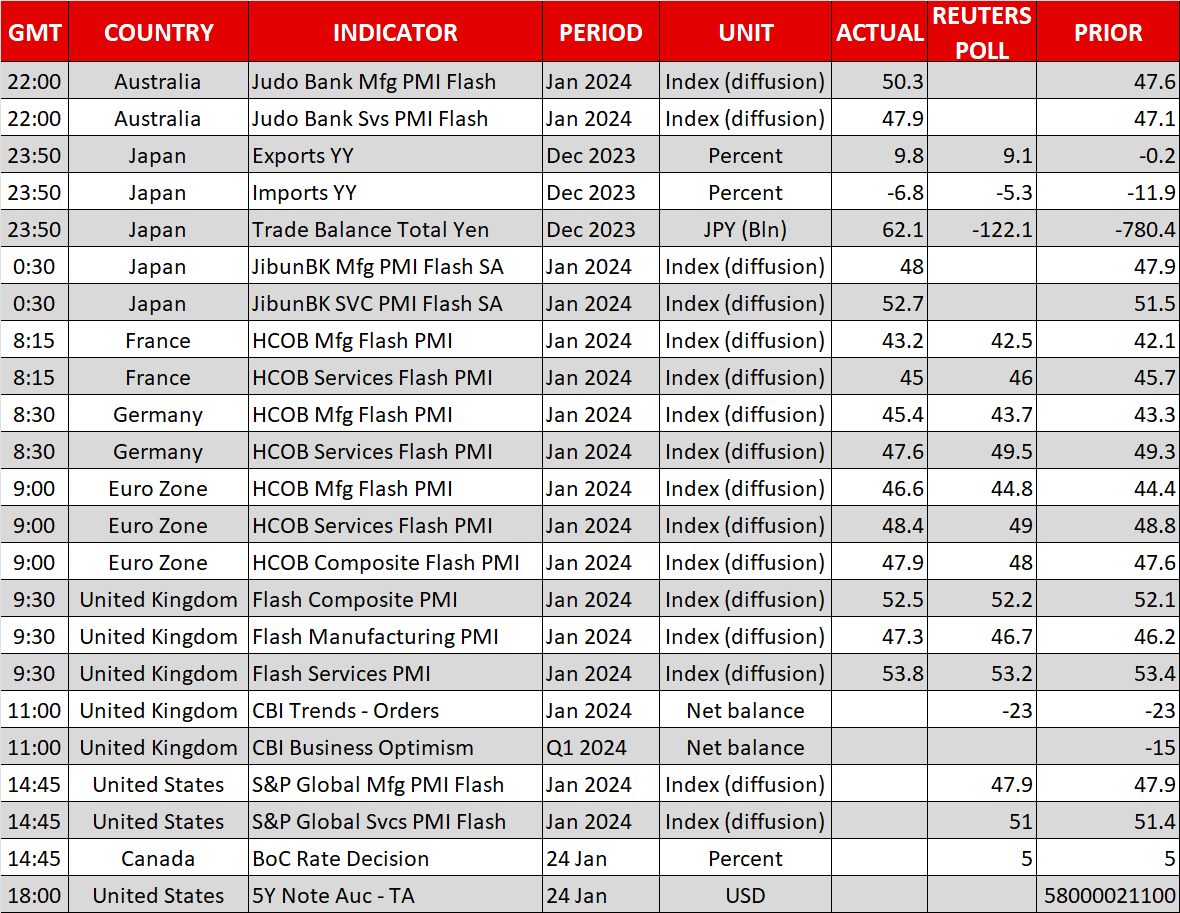- Dollar retreats as Bullard talks March rate cut
- Yen recovers again on BoJ hike speculation
- BoC to keep interest rates untouched
- Risk appetite remains supported, S&P 500 hits new record

Bullard says Fed could cut rates as soon as March
The US dollar traded higher against most of the major currencies on Tuesday, losing some ground only against the risk-linked aussie, kiwi and loonie.
That said, the greenback is on the back foot today, perhaps due to remarks by former St. Louis Fed President James Bullard, who said that he expects the Fed to begin lowering interest rates before inflation hits 2%, adding that this could be the case as soon as March.
Investors added a few basis points worth of rate reductions back to the table, but nothing spectacular. The probability of a March hike rose slightly above 50%, and the total number of basis points worth of rate cuts for the whole year increased to 138.
The reason why investors were not particularly shocked by Bullard’s reference to a March cut may be that he is not a decision maker anymore. What’s more, they may have been reluctant to significantly adjust their view ahead of today’s flash PMIs for January, as well as the GDP and PCE inflation data, due out tomorrow and Friday, respectively.
And even if the aforementioned data continue to suggest that the economy can withstand elevated rates for a while longer, the event that could decide the near-term fate of the greenback may be next week’s FOMC decision.
Yen receives another round of support, BoC decision on tap
The yen gave back all of its BoJ related gains yesterday, and even finished the day lower. However, it is staging another recovery today as market participants are adding to their rate hike bets.
A 10bps rate increase from -0.1% to 0% is now fully factored in for June, while the probability of that happening in April jumped above 70%. Maybe investors decided to further lift their BoJ implied path after the head of Japan’s Business Federation said that they are aiming for wage hikes to outpace inflation in this year’s labor talks.
The loonie is trading virtually unchanged today, perhaps as traders are afraid to assume a clear direction ahead of the BoC decision later today. The Bank is anticipated to keep interest rates untouched at 5.00%, but interestingly, the market assigns a 15% probability for an immediate 25bps reduction.
This may have been due to core inflation falling sharply lately. However, elevated wages and record levels of immigration add to concerns of stickier prices in the months to come. Therefore, the Bank will most likely keep interest rates untouched, and thus, the spotlight will turn to hints and signals regarding its future course of action.
Eurozone downturn eases, UK economy accelerates
The euro came under some selling interest as the preliminary PMI surveys from France and Germany revealed that business activity in both nations continued deteriorating, with the numbers of the whole Eurozone though suggesting that the downturn is easing. The euro was able to rebound, with attention now turning to tomorrow’s ECB decision for guidance on when the first rate reduction could be delivered. They are currently assigning a 76% probability to the April meeting.
The UK PMIs painted a different picture, with both the services and manufacturing sectors improving, although the latter index stayed in contractionary territory. The composite index rose to 52.5 from 52.1, confirming the notion that the BoE may be among the last major central banks to hit the rate cut button. The pound gained at the time of the release.
S&P 500 hits new record on increasing risk appetite
On Wall Street, the Dow Jones pulled back yesterday, but both the Nasdaq and the S&P 500 added gains, with the latter hitting a record high for a third straight day.
It seems that China’s decision to take measures to stabilize market confidence continued supporting risk appetite, and this is evident by the fact that yesterday’s main gainers among the major currencies were the risk- and China-linked aussie and kiwi.
Today, China’s Shanghai Composite extended its recovery, and European indices are trading in the green. This, combined with Netflix’s strong beat on subscribers for Q4, suggests that Wall Street may follow suit.
